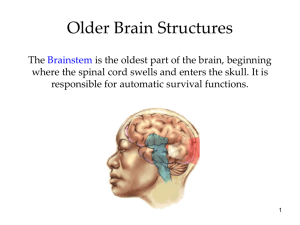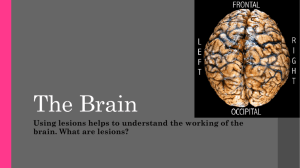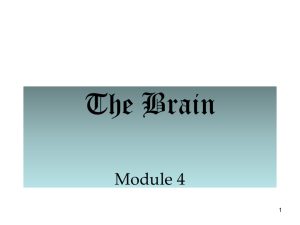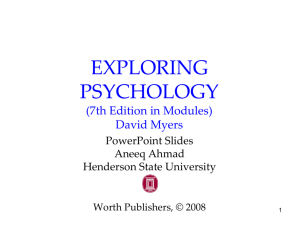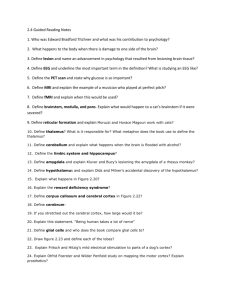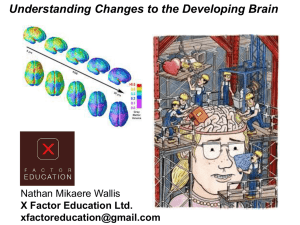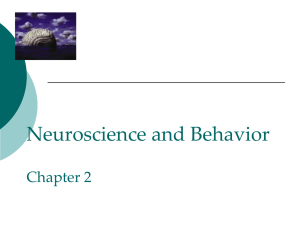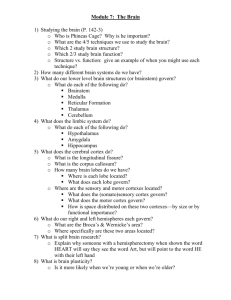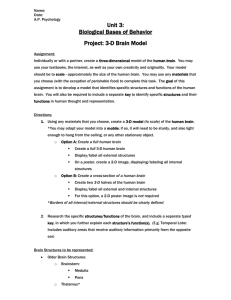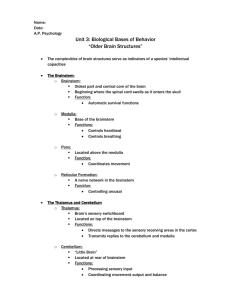Older Brain Structures
advertisement
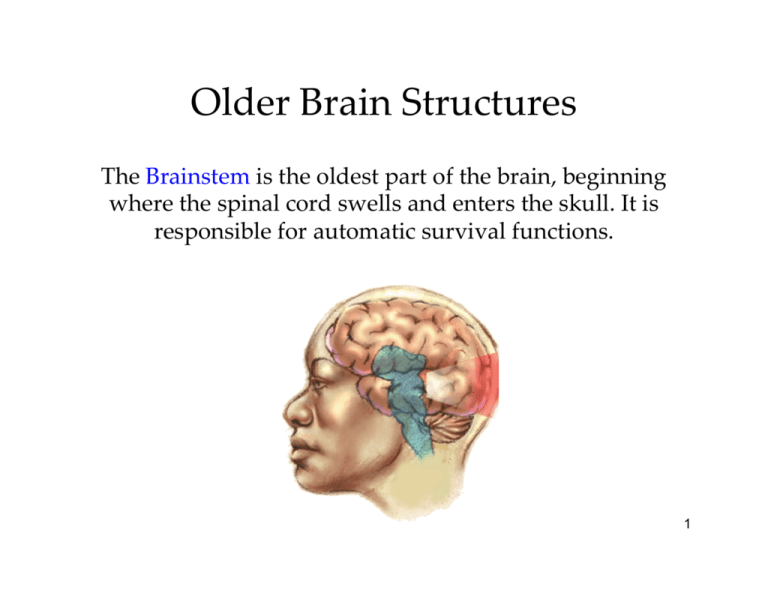
Older Brain Structures The Brainstem is the oldest part of the brain, beginning where the spinal cord swells and enters the skull. It is responsible for automatic survival functions. 1 Brain Stem The Medulla [muh-­‐‑DUL-­‐‑uh] is the base of the brainstem It controls autonomic functions and relays nerve signals between the brain and spinal cord. • respiration • blood pressure • heart rate • reflex arcs • vomiting 2 Brain Stem Pons and inside that the (Reticular Formation) is a nerve network in the brainstem that plays an important role in controlling arousal. • It is involved in motor control and sensory analysis... for example, information from the ear first enters the brain in the pons. It has parts that are important for the level of consciousness and for sleep. The Reticular Formation controls: • Attention • Cardiac Reflexes • Motor Functions • Regulates Awareness • Relays Nerve Signals to the Cerebral Cortex • Sleep 3 Brain Stem The Medulla [muh-­‐‑ DUL-­‐‑uh] is the base of the brainstem that controls heartbeat and breathing. Reticular Formation is a nerve network in the brainstem that plays an important role in controlling arousal. 4 Brain Stem The Thalamus [THAL-­‐‑ uh-­‐‑muss] is the brain’s sensory switchboard, located on top of the brainstem. It directs messages to the sensory areas in the cortex and transmits replies to the cerebellum and medulla. 5 Cerebellum The “liQle brain” aQached to the rear of the brainstem. It helps coordinate voluntary movements and balance. 6 The Limbic System The Limbic System is a doughnut-­‐‑shaped system of neural structures at the border of the brainstem and cerebrum, associated with emotions such as fear, aggression and drives for food and sex. It includes the hippocampus, amygdala, and hypothalamus. 7 Amygdala The Amygdala [ah-­‐‑MIG-­‐‑ dah-­‐‑la] consists of two almond-­‐‑shaped neural clusters linked to the emotions of fear and anger. 8 Hypothalamus The Hypothalamus lies below (hypo) the thalamus. It directs several maintenance activities like eating, drinking, body temperature, and control of emotions. It helps govern the endocrine system via the pituitary gland. 9 Reward Center Sanjiv Talwar, SUNY Downstate Rats cross an electrified grid for self-­‐‑stimulation when electrodes are placed in the reward (hypothalamus) center (top picture). When the limbic system is manipulated, a rat will navigate fields or climb up a tree (boQom picture). 10 The Cerebral Cortex The intricate fabric of interconnected neural cells that covers the cerebral hemispheres. It is the body’s ultimate control and information processing center. 11 Structure of the Cortex Each brain hemisphere is divided into four lobes that are separated by prominent fissures. These lobes are the frontal lobe (forehead), parietal lobe (top to rear head), occipital lobe (back head) and temporal lobe (side of head). 12 Functions of the Cortex The Motor Cortex is the area at the rear of the frontal lobes that control voluntary movements. The Sensory Cortex (parietal cortex) receives information from skin surface and sense organs. 13 Visual Function Courtesy of V.P. Clark, K. Keill, J. Ma. Maisog, S. Courtney, L.G. Ungerleider, and J.V. Haxby, National Institute of Mental Health The functional MRI scan shows the visual cortex is active as the subject looks at faces. 14 Auditory Function The functional MRI scan shows the auditory cortex is active in patients who hallucinate. 15 Association Areas More intelligent animals have increased “uncommiQed” or association areas of the cortex. 16 Language Aphasia is an impairment of language, usually caused by left hemisphere damage either to Broca’s area (impaired speaking) or to Wernicke’s area (impaired understanding). 17 Specialization & Integration Brain activity when hearing, seeing, and speaking words 18
